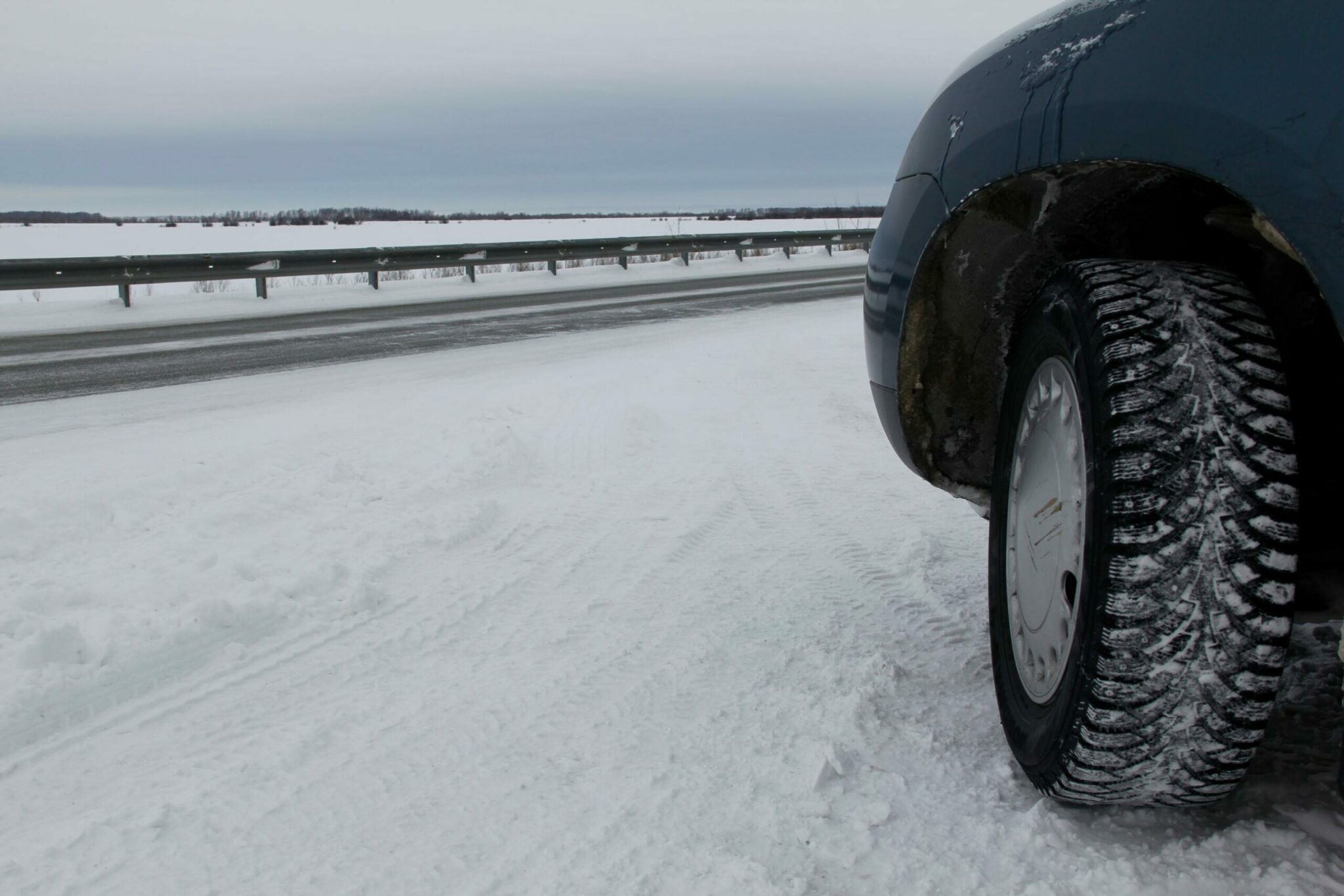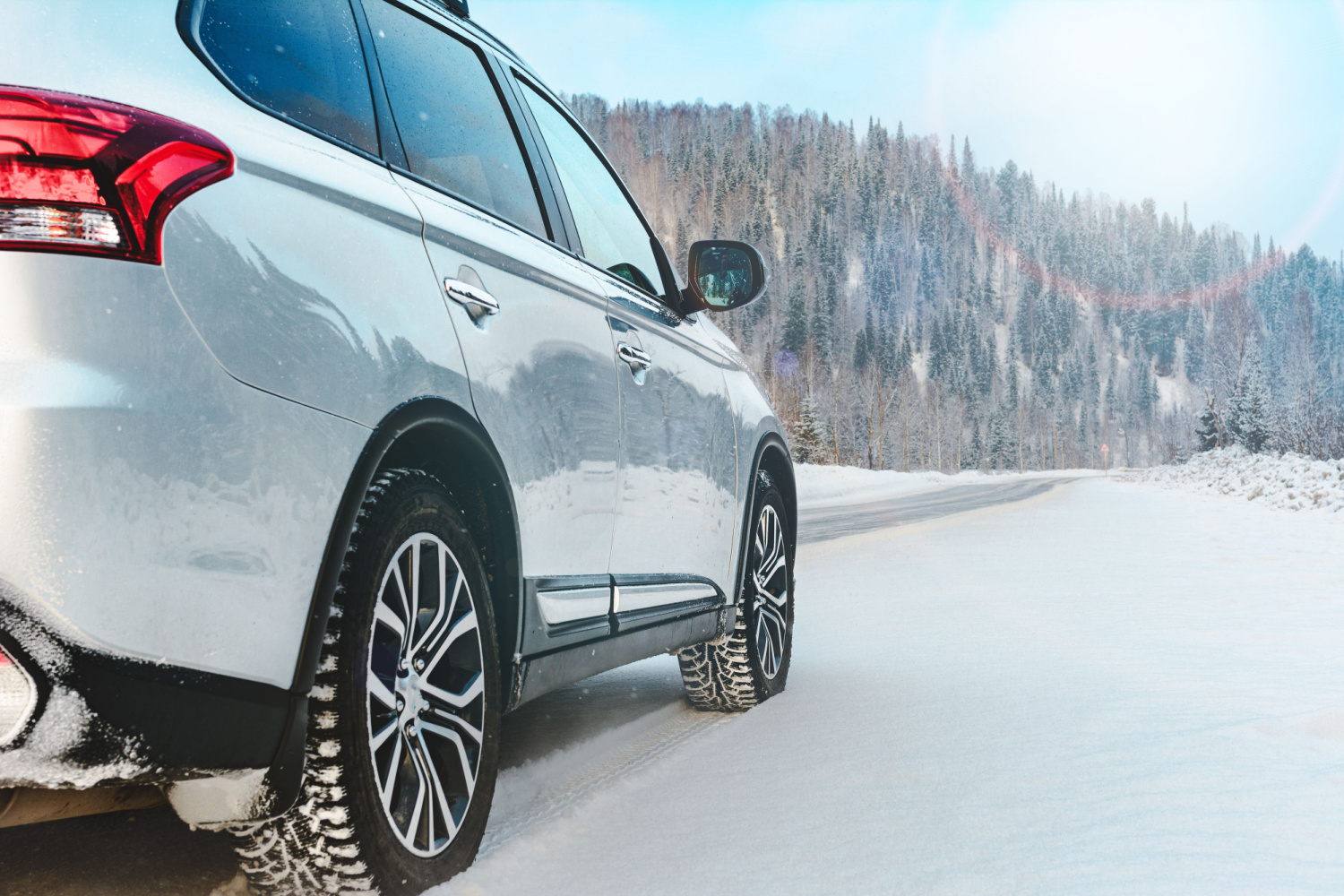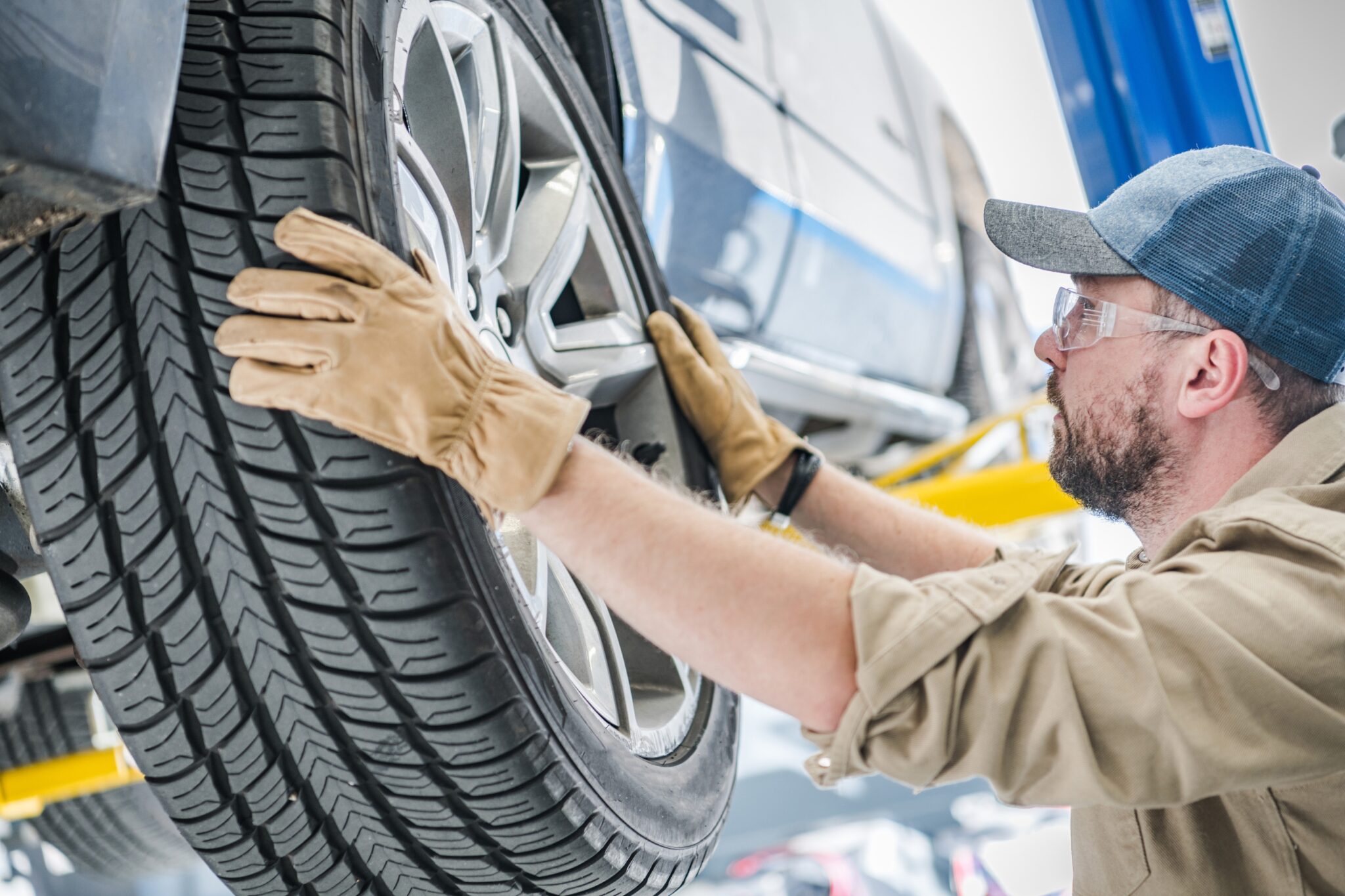Why Winter Tires Are Essential for Alberta’s Harsh Roads
Driving in Alberta’s winter is no joke. Ice, snow, and freezing temps make for a wild ride. You can’t expect normal tires to grip the road. Winter tires grab the road better, giving you control and peace of mind. Ever hit the brakes and felt that slide? Winter tires stop that. All-season tires? They just don’t stack up.
At Nothing But Tires, we know our stuff. We’ll get you equipped with the right winter tires. Trust us, we’ve seen it all. Winter tires aren’t an optional choice; they’re a necessary one.
Key Takeaways
-
Winter tires are a must in Alberta’s harsh winter conditions. They offer the best traction on icy and snowy roads, making for a safer drive.
-
They offer some major benefits, including better braking and handling, that can improve overall vehicle safety during the cold months.
-
Alberta’s laws do not require winter tires, but with the extreme winter climate, they are advised.
-
Pick winter tires by zeroing in on key details such as tread design and tire size. Be sure to factor in your vehicle’s specific needs so it performs its best.
-
Install your winter tires before the first snowfall. Late October or early November should give you the time to be set for winter conditions.
-
Make sure to continuously inspect your car, including checking tire pressure and tread depth throughout the winter.
Why Winter Tires Matter

1. Ensuring Safety on Ice
Oh, we know when Alberta hits winter that roads are an entirely different beast.
Ice and snow make even the simplest drive to the store feel like a nerve-wracking adventure.
That’s where winter tires come in.
They’re your best friends on the slick stuff, made to cling to icy surfaces better than regular tires. They can actually reduce skidding and enhance how your car stops in the wet on the roads.
Now imagine cruising with that added confidence, safe in the knowledge that your tires are doing their best to keep you safe.
Winter tires really do save you from those nasty winter fender benders.
Their special tread patterns dig into the ice and snow. This design gives you great traction, so you don’t run into the slipping and sliding that summer tires tend to do.
In Alberta’s fickle weather, winter tires aren’t so much a recommendation as a necessity. It means knowing that, when you hit that icy patch, your tires won’t let you down.
This simple choice might be the thing that gets you back home without a fender bender.
2. Enhancing Vehicle Control
Control is everything when it comes to handling your car in winter.
Winter tires give your car much better grip.
This design allows you to steer with confidence and tackle corners without that skating rink feel.
You’ll notice the difference in how your car responds, especially when driving on those snowy and icy roads.
The stability these tires provide can make a tense drive manageable.
Let’s talk tread design. It’s what makes your car stick to the road.
If you’re wondering about all those deep grooves and unique patterns of winter tires, they serve a vital purpose.
They are specially designed to channel snow, ice, and slush away from the tire surface, which helps you maintain maximum grip on slippery roads.
You can optimize your vehicle’s performance by purchasing the right winter tires.
Whether you drive a compact car or a larger crossover, there’s a winter tire that’s right for your needs.
These tires offer the control you need for winter driving safely.
3. Meeting Alberta’s Laws
In Alberta, while winter tires aren’t mandated by law like in Quebec, they’re very much encouraged.
Knowing the provincial guidelines can save you from fines and, more importantly, keep you safe.
When you know the rules, you avoid legal problems. It also readies you for whatever winter throws your way.
Understanding the most recent regulations is important. Laws can change; staying informed means you won’t be caught off guard.
Even if it’s not required by law, it’s simply a smart move to use winter tires. It’s a small investment in safety that pays big dividends, especially during Alberta’s infamous winter months.
Benefits of Winter Tires

Boosting Traction and Grip
If you want to keep your car steady on Alberta’s slippery winter roads, winter tires are your BFF.
These tires are equipped with specialized tread patterns that grip the road like a champion.
They have great traction, even on roads with snow or ice.
You know those times you hit the brakes, and your car just keeps sliding? Well, that’s where the winter tires come in.
These features give you more control and better braking power.
That’s an amazing relief when driving on cold, dry, snow-covered, icy, or slushy roads.
Winter tires have these special rubber compounds capable of remaining flexible even at freezing temperatures.
This flexibility is key because it keeps the momentum. Regular tires will stiffen and lose grip in the cold.
Winter tires, on the other hand, still stay soft to keep maximum contact with the road. This means you get better acceleration and improved cornering stability.
Now you can take those turns without thinking you’re riding a slip-and-slide!
Extending Tire Lifespan
Making the switch to winter tires isn’t just about safety — it’s about extending the life of your other tires.
When you put on winter tires for the cold months, your all-season or summer tires get a much-deserved rest.
They don’t have to endure the harsh winter conditions that cause premature wear. By swapping them out, you’re preventing them from taking unnecessary damage and extending their lifespan.
This seasonal shift isn’t just a savvy strategy for performance. It’s also a cost-saving strategy.
Winter tires safeguard your investment by saving your summer tires. That way, you’ll be ready to hit the road when the snow melts.
With the right winter tires — ones designed for the cold and snow, or the all-weather kind — Alberta’s winter is no match for you.
So prepare to deal with whatever the season throws your way!
Saving on Fuel Costs
You may not think of tires as a ticket to saving money on gas, but winter tires can help improve your fuel economy.
Winter tires would help maximize your fuel savings. It’s the relationship between tire performance and fuel consumption.
Winter tires reduce rolling resistance, which means your car doesn’t have to work as hard to move forward. This can also translate to potential savings on fuel costs.
In the winter months, every little bit helps.
High-quality winter tires can make a tangible impact on how much you’re spending at the pump.
While you’re keeping yourself safe on the roads, you’re helping your wallet, too.
It’s a win-win situation, ensuring safe winter driving without burning through fuel—or your budget.
Alberta’s Winter Tire Rules

Understanding Mandatory Use
In Alberta, it’s important to be aware of when and where you need winter tires. This knowledge is especially important for anyone driving during the colder months.
In some regions, winter tires aren’t just a smart move—they’re mandatory. These regions include more mountainous and northern parts of Alberta, where snow and ice make roads particularly tricky.
Usually between October and April, you have to have winter tires on your car in these locations. This rule isn’t about being flashy; it’s about keeping you and others safe on the road.
Winter tires provide better grip and control, allowing you to avoid accidents brought on by slippery conditions.
To avoid fines and remain on the right side of the law, it’s a good idea to check local regulations often.
This doesn’t just mean ensuring your tires are suitable, but also knowing the reasoning behind these regulations.
They push to decrease the number of crashes when roads are icy or snow-covered. By sticking with these guidelines, you safeguard your wallet from fines. You also help to keep everyone safe.
Studded Tire Permissions
Studded tires can be a godsend for winter driving, especially if you encounter icy roads. Before you go out and get some, you should know the rules in Alberta.
Studded tires are permitted, but typically only if you have them from October 15 to April 30. They have little metal studs that dig into ice, which gives you extra grip. They are super helpful on icy roads. If you primarily drive on well-kept city streets, they’re not typically needed.
There are advantages and disadvantages to studded tires.
The upside is that they offer fantastic traction on ice, so you’ll likely never slip.
However, they wear the road surface down. Moreover, their effectiveness decreases on dry pavement.
Before opting for studded tires, consider where you’ll be driving most often.
If you’re just staying in the city, regular winter tires could work. If you’re heading out into more rural or mountainous areas, studs may be your better option.
Knowing Installation Deadlines
In preparation for winter, the timing of when to switch out your tires is everything.
In Alberta, put on your winter tires by late October. This is typically when temperatures start to cool off substantially.
Early installation means that you’re not surprised with an early snowstorm. It saves you the chaotic time at tire shops.
Those places get really crazy when everybody rushes for last-minute installations.
Changing your tires on time isn’t just about maintaining a rule; it’s also to ensure your tires function correctly.
Winter tires are truly effective when the temperature is consistently below 7°C. If you delay too long, you could sacrifice their impact — particularly those critical initial weeks of winter.
Planning ahead means you get better grip and control and a safer, more comfortable winter driving experience.
Circle those dates and have those tires switched in time to face winter’s road with confidence.
Choosing Suitable Winter Tires
Exploring Tire Varieties
When it comes to winter tires, there are a handful of different types you can opt for, and each has its advantages. Let’s tear it down a little bit.
You’ve even got your studded tires—great for icy roads. These have little metal studs that dig into the ice, giving you increased grip. Just keep in mind they’re rather loud. Check local regulations, as they may not be permitted in all areas.
Then there are the studless options. They have a special rubber compound that improves grip. The unique tread design provides excellent traction on snow and ice, eliminating the need for studs. They’re quieter and often preferred for city driving.
Last of all, there are all-terrain winter tires. If you’re behind the wheel of any truck or SUV, you’ll want to take on both highways and country roads with confidence. Choosing the right vehicle will make all the difference.
They do a fairly good job with a variety of conditions, though they don’t have the specialty of the other two types.
The options can vary for specific vehicles, such as passenger cars compared to trucks.
Trucks may require sturdier tires capable of carrying greater loads and driving over unpaved terrains.
Sedans or other smaller cars may benefit from tires that prioritize smoothness and noise reduction.
It’s all about pairing your vehicle type and driving style with the right tire.
Evaluating Tread Patterns
Tread patterns might seem like a small detail, but they make a huge difference in how your tires perform in winter. The tread is what grips the road, so it’s important to nail this one.
Some winter tires have a V-shaped pattern that helps channel snow and slush away from the tire to increase grip. Others may have more blocky designs, which can be good for deep snow.
Tread depth is another thing, I guess.
If so, deeper treads bite into the snow better than shallow treads, providing more traction and control. As the treads wear down, their grip becomes weaker.
It’s really important to track that wear over time.
For icy conditions, some tread patterns are designed to better handle slick surfaces, which offer more biting edges.
When you’re choosing, consider where you drive most frequently and what type of winter conditions you’ll encounter.
Assessing Tire Features
Winter tires have a range of features that can improve performance and safety.
The rubber compound is the most important.
Winter tires use rubber that remains flexible even in freezing temperatures. This flexibility is important as it allows the tire to stay in contact with the road, enhancing grip and handling.
Noise reduction is another feature to look for. Some winter tires reduce road noise for a more comfortable drive.
Don’t forget about ride comfort. A good winter tire keeps you safe. It also provides a smooth ride, even over bumpy winter streets.
When you’re evaluating these features, consider what’s most important to you.
Is it safety, comfort, or perhaps some combination of the two?
Focus on the features that matter to the way you drive.
If you’re ever uncertain, it’s worth asking tire experts. They can provide insights that are specific to your situation and help you make a decision.
Timing for Winter Tire Installation
Ideal Seasonal Windows
To determine when it’s best to put on winter tires in Alberta, consider the weather patterns. Make sure that you prepare for better conditions and stay ahead of the curve. You know how Alberta can be!
It’s not just about waiting for the snow; it’s about planning ahead. Ideally, you’re looking at a seasonal window that starts when temperatures consistently drop to 7°C (45°F).
Why? Because that’s when all-season tires start to harden, losing their grip, whereas winter tires stay soft and grippy.
In Alberta, mark your calendar for mid-October to early November. It’s time to put on your winter tires.
Don’t pick a date and stop there; monitor the forecast.
The end of winter tire season tends to be around April, but not always. Some years, winter seems to hang on forever, and you’ll need those tires longer.
It’s about being flexible and aware of what Mother Nature is up to.
Planning your tire schedule isn’t just smart; it’s safe.
It’s like studying for a pop quiz you know is coming.
You don’t want to be on summer tires when the first snow comes down.
In some parts of Canada, it’s the law.
Some provinces even require winter tires during certain months.
Stay up to date on the rules in your neck of the woods!
Monitoring Weather Changes
Keeping up on changes in the weather almost gives you a sixth sense as to when it is safe to drive. If you pay attention to how the winds are changing, you’re less likely to get blindsided.
Alberta’s weather can be unpredictable; so it’s important to stay on top of those forecasts.
Take it from me: being prepared pays off.
Use weather forecasts like they’re your best friend. They can help you know when those winter tires will need to be in use.
When you see forecasts of cold or snow, act! It’s time to change your tires. Don’t wait until the roads are already icy.
Take initiative, not reaction.
You’ll also want to pay attention to your driving habits. If you’re seeing slipperier roads or a longer time to stop, it’s time to consider that change.
Signs of severe weather, such as early snowfalls or sudden temperature plummets, are obvious signs that winter tires should be used.
Being on the lookout for these signs can mean the difference between staying safe on the road and becoming a victim.
Recognizing the Need for Winter Tires

Assessing Road Conditions
When you’re in Alberta, the weather can switch up fast, and road conditions change just as quickly.
It’s wise to watch the roads, particularly with winter approaching.
Perhaps you’ll see roads glazed over with ice or covered in snow. That’s a big sign that your everyday tires just won’t work anymore.
Compare how your vehicle handles on different surfaces. For example, your car may slide more on icy roads, or it may not stop as quickly on snow-covered streets. It could be a sign you need winter tires, which are specially designed to grip better in these conditions.
Being aware of local road conditions is another smart move.
Look at local news or apps that report road conditions. They’ll warn you about any icy patches or snow drifts. Use this information to adapt your driving style to the road.
Slow down or switch the route when you need to.
If these changes still have you nervous, invest in winter tires. They can enhance your car’s performance and save you time worrying.
Identifying Performance Gaps
Now, let’s discuss how your car drives.
When the roads become icy, you find your car doesn’t behave quite as well. It feels like you’re flying off the handle more often, or you take longer to cool down.
These are obvious indicators that your current tires aren’t ready for the winter.
If your car skids or you struggle for grip, your tires may not be gripping the road properly. This is especially true if you’re having difficulty steering or stopping when it’s snowing or icy outside.
By this point, you should consider winter tires. They’re designed to tackle cold, snowy, and icy conditions.
You can also ask a pro to check your tires. They’ll tell you if your tires are good enough for winter driving.
If they’re not and you’re dealing with these performance issues, you should switch to winter tires. They’ll provide you with better traction and control, allowing you to drive safer in Alberta’s winter conditions.
Preparing Your Vehicle for Winter

Importance of Proper Installation
Okay, now for the proper installation of your winter tires. It’s not enough to slap them on and call it a day.
When you opt for professional installation, you can guarantee that each tire will be mounted correctly.
That means your tires will have better grip on the road, especially when things get icy or snowy.
It’s like a good pair of boots in winter — if they’re not on right, you’re bound to slip.
If winter tires are installed wrong, you might have some serious issues.
We’re dealing with uneven wear, which can cause tire damage. Don’t get us started on the way this could screw with your car’s handling.
Safety is paramount, particularly when driving Alberta’s winter wonderland.
By making sure it’s installed properly, you are really reducing these risks a great deal.
How do you ensure they’re mounted the right way?
Easy—follow the manufacturer’s guidelines. They’re there for a reason.
Following these guidelines keeps your warranty intact, which is incredibly important. You don’t want to void that warranty just because you skipped a step, do you?
Leave it to the pros, and you’ll be cruising safely through those snowy streets in no time.
Cost Considerations for Tire Change
Let’s break down the dollars and cents of replacing your tires with winter ones.
Installing winter tires can be expensive at first. Here’s the kicker: it’s an investment that pays off in the long run.
Why?
That’s because winter tires can literally pay for themselves when it comes to repairs and even help boost your fuel economy.
Think about it—when your tires are doing their job right, your car doesn’t have to work as hard.
This translates to less wear and tear and fewer visits to the mechanic.
Plus, you’ll probably save some fuel since your engine isn’t working so hard.
That’s a win-win scenario.
When you’re searching for the best deal, don’t just buy the first set you find.
It’s also smart to shop around and compare prices across brands and models.
Sure, some options may be less expensive, but they may not be the quality you require for safe winter driving.
It’s a balancing act between cost, performance, and safety.
Lastly, keep in mind that the price of a tire change isn’t just about the initial cost.
Think about what you’re getting in terms of safety and peace of mind.
That amount of confidence when you’re on icy roads is worth a lot, right?
While it may pinch the wallet now, view it more like an investment in your safety.
Conclusion
To get winter ahead, you gotta do this gear up.
Winter tires are not merely a good idea; they’re a necessity in Alberta. They hold the road when it gets slippery and keep you safe.
Make sure you swap out your tires before snow hits, but don’t sit around waiting for the first flake to fall. Check out weather forecasts and map out your changeover.
You wouldn’t go out in a snowstorm without your coat, would you? Same with your car and tires.
Go ahead and make the switch early, drive through the season with confidence, and let those winter tires do their thing.
Need to ask a question or two or find some more advice?
Learn more about winter tires in depth.
Drive safely and smartly on those icy roads!
Frequently Asked Questions
Why are winter tires important in Alberta?
Winter tires will improve your safety on icy and snowy roads. They offer improved traction and control, especially during Alberta’s brutal winters. Invest in winter tires for a safer driving experience.
What are the benefits of using winter tires?
Winter tires provide better traction and stopping power when it’s cold. They diminish the opportunity for slipping and sliding. Another benefit is enhanced safety and driving with confidence.
What are Alberta’s winter tire rules?
Alberta law doesn’t require winter tires; you definitely should use them for safety. Some highways may have advisories or require them during severe weather conditions.
How do I choose suitable winter tires?
Look for tire size, tread pattern, and rubber compound. Consider contacting a tire professional for assistance. Pick tires that suit your driving needs and vehicle specifications.
When should I install winter tires in Alberta?
Install winter tires when temperatures regularly fall below 7° C. The earlier we install, the more prepared we are. The best time is usually late October to early November in Alberta.
How can I recognize the need for winter tires?
Signs include frequent skidding, long stopping distances, or difficulty steering. These point to the need for winter tires. Stay safe by switching before winter truly sets in.
How can I prepare my vehicle for winter?
Check tire pressure, battery health, and antifreeze levels. Install winter tires and pack an emergency kit. Regular maintenance keeps your vehicle prepped for Alberta’s winters.
Here are some of Nothing But Tires’ Top Resources:
Understanding Tread Rubber compounds
Handle extreme winter conditions
Looking for help navigating the purchase and transition from summer to winter tires cost, to snow or all weather tyres? No problem. Nothing But Tires offers a huge selection of rubber to meet your needs and budget! Contact our team and get informed help with the experts. With exceptional experience in providing both new and used tires and from full sets or a single tire to replace damaged unit, we are here to help!
